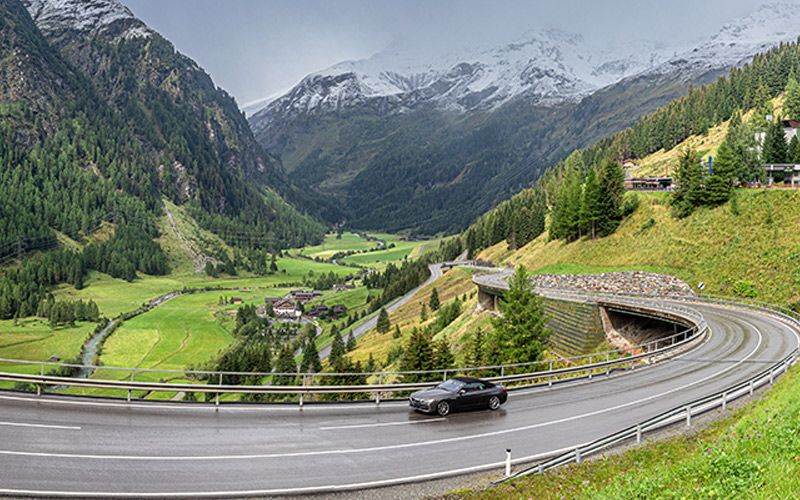All You Need to Know About Preparing Your Car for a Trip in Europe

Get ready for the long miles by getting a health check, packing the right equipment, and learning the local rules.
Is a road trip to Europe on your bucket list? Before you start your journey, have a look at the driving rules, and how to prepare your car for the journey.
For instance, the majority of Europe drives on the right-hand side of the road, meaning driving on the other side can feel unfamiliar and daunting.
Continue reading to find out what things to consider, and how to get your car ready for the trip ahead.
Driving in Europe
When driving in EU or EEA countries, you are not likely to need an International Driving Permit (IDP). However, if you have a paper driving licence, or it has been issued in Gibraltar, Guernsey, Jersey or the Isle of Man, you should check with the local embassy whether you need an IDP.
You should also make sure you have all the correct documents with you. If you are required to purchase one, you can get one from your local Post Office.
Make sure that your driving licence is still valid and renew it if it’s about to expire.
Last, but certainly not least, remember to drive on the right side of the road. Many countries in Europe drive on the 'wrong’ side of the road. Before you leave a junction or are about to enter the highway, make sure you are following the local rules.
Looking to upgrade your car this summer?
You can find a large range of new and used vehicles at Macklin Motors. Being part of one of the UK’s largest automotive retailers, you get access to a wider stock available.
We also offer a fantastic collection of electric and hybrid models for those wanting to go green.
How to prepare your car for the trip ahead
It’s good to make sure that you have all the necessary safety equipment and accessories before setting off. You should make sure to pack the following:
- Headlight converters, or get your headlights adjusted
- Reflective jackets
- Warning triangle
- First-aid kit
- Fire extinguisher
- Snow chains or winter tyres (depending on the season)
- Satellite navigation system and paper map
- Crit'Air sticker, if driving in France
- Other emission stickers, in other European countries
- Loose euros for tolls
You should also check that your car is ready to take a longer journey. Get a vehicle health check before you set off. You can book a health inspection for your car with Macklin Motors. You don’t want your car to fail you.
Do your own check
You can also do your bit to ensure your vehicle is roadworthy. Clean your car thoroughly outside, and wash and vacuum the inside. You should also check:
- Tyres
- Oil levels
- Coolant levels
- Washer fluid levels
- Wiper blades
- Headlight bulbs
Take these documents with you to Europe
Make sure you have all the right documents and photocopies with you. In the unlikely event that you get into an accident, handling the situation is easier when you have all the paperwork ready. You must have these documents with you:
- Passport
- Valid, full driving licence
- International Driving Permit, if necessary
- Travel Insurance Documents
- European Breakdown Cover
- Copy of your motor insurance
- Vehicle registration certificate, V5C or logbook
- COVID-19 vaccination certificates, if necessary
If your vehicle number plate does not include a Euro symbol, or GB identifier, you also must have a UK sticker on your car. However, if driving in Spain, Cyprus or Malta, you must have the UK sticker displayed on your car regardless.
If driving in Ireland, you are not required to have a UK sticker on your car or GB on your number plate.
Speed limits in most popular European countries for UK travellers
France
- Motorways: 130km/h (81mph)
- Urban motorways and dual carriageways with central reservations: 110km/h (68mph)
- Outside built-up areas: 80km/h (50mph)
- Built-up areas: 50km/h (31mph)
Germany
- Motorways: 130km/h (81mph), or no speed limit on some motorways
- Outside built-up areas: 100km/h (62mph)
- Built-up areas: 50km/h (31mph)
Italy
- Motorways: 130km/h (81mph)
- Dual carriageways: 110km/h (68mph)
- Urban motorways: 70km/h (44mph)
- Outside built-up areas: 90km/h (56mph)
- Built-up areas: 50km/h (31mph)
Netherlands
- Motorways: 130km/h (81mph)
- Outside built-up areas: 80km/h (50mph)
- Built-up areas: 50km/h (31mph)
Portugal
- Motorways: 120km/h (75mph)
- Outside built-up areas: 90km/h (56mph)
- Built-up areas: 50km/h (31mph)
Spain
- Motorways: 120km/h (75mph)
- Outside built-up areas: 90km/h (56mph) on ordinary roads, 100km/h (62mph) on roads with more than one lane in each direction
- Built-up areas: 50km/h (31mph)
- Residential areas: 20km/h (12mph)
We hope that you have found this article useful and enjoy your trip to Europe. For more interesting articles, visit our newsroom.